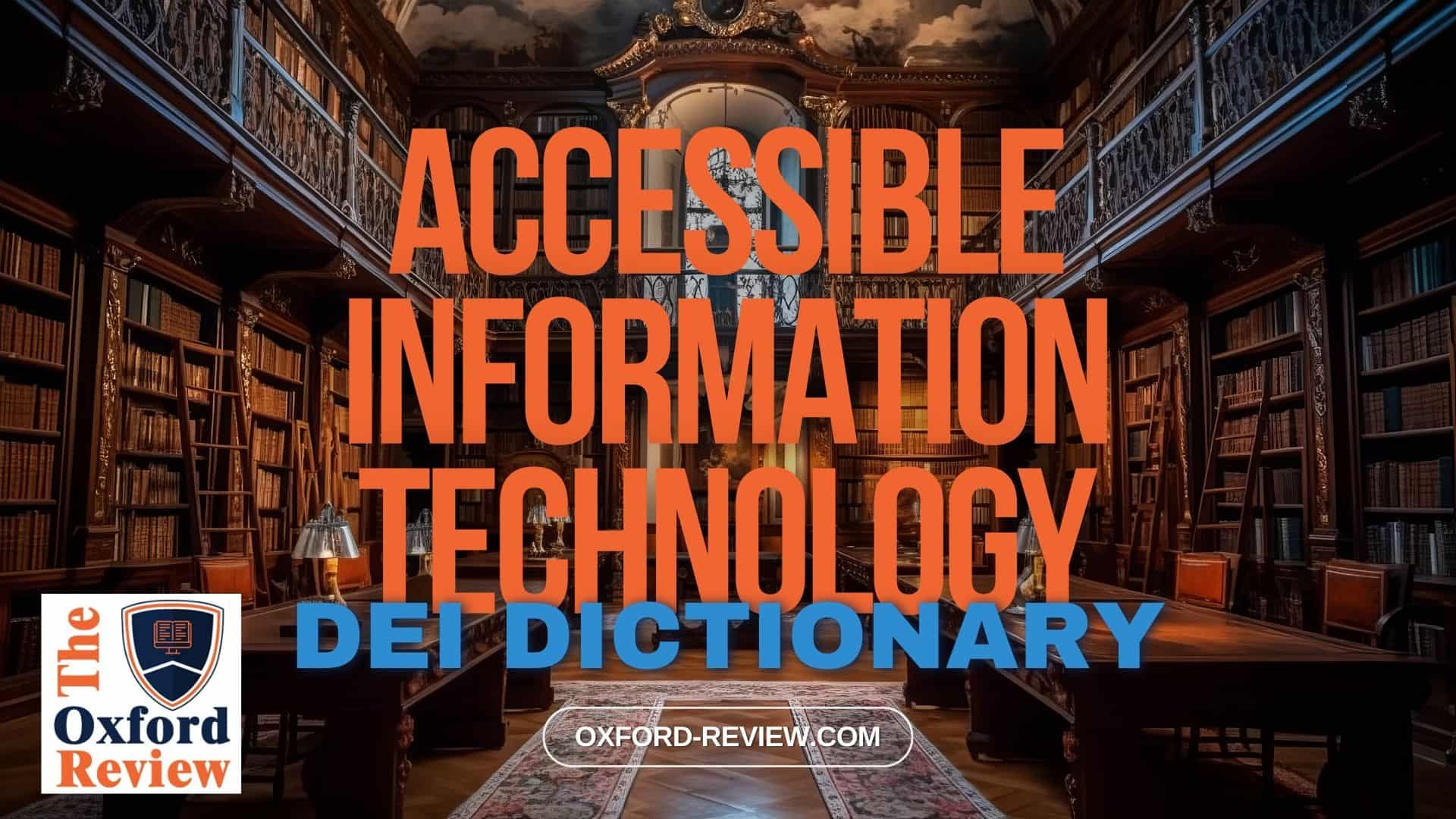Accessible Information Technology – Definition and Explanation

Enhancing Inclusivity: Understanding Accessible Information Technology
In today’s digital era, prioritising inclusivity and accessibility is essential. Accessible Information Technology (AIT) plays a crucial role in promoting diversity, equity, and inclusion (DEI) across various sectors. From websites to software applications, AIT aims to remove barriers, ensuring that everyone, regardless of ability, can access and engage with digital content effortlessly.
Definition:
Accessible Information Technology refers to the design, development, and implementation of digital tools and platforms that are usable by individuals with diverse abilities. It encompasses features and functionalities that cater to people with disabilities, including visual, auditory, physical, cognitive, and neurological impairments.
Why Accessible Information Technology Matters:
- Inclusivity: AIT fosters inclusivity by accommodating individuals with disabilities, ensuring equal access to information and services.
- Compliance: Many countries have regulations, such as the Equality Act in the UK and the Web Content Accessibility Guidelines (WCAG), requiring digital platforms to be accessible to all users.
- User Experience: Implementing AIT enhances the user experience for everyone, leading to increased engagement and satisfaction.
- Ethical Responsibility: Prioritising accessibility reflects an organisation’s commitment to ethical business practices and social responsibility.
Key Features:
- Alternative Text: Providing descriptive alt text for images enables screen readers to convey visual content to individuals with visual impairments.
- Keyboard Accessibility: Ensuring all functionalities can be accessed and operated using a keyboard facilitates navigation for users who cannot use a mouse.
- Captioning and Transcripts: Adding captions to videos and transcripts to audio content ensures individuals with hearing impairments can comprehend multimedia materials.
- Clear Structure and Navigation: Organising content logically with proper headings and navigation menus facilitates ease of use for all users, including those with cognitive disabilities.
- Scalability: Designing flexible layouts and scalable fonts allows users to adjust the display according to their preferences and needs.
Example:
Imagine a local council’s website redesign project aimed at improving accessibility. The web development team ensures compliance with WCAG standards by implementing features such as descriptive alt text for images, keyboard-friendly navigation, and transcripts for audiovisual content. Additionally, they conduct usability testing with individuals representing diverse abilities to gather feedback and make necessary adjustments. As a result, the revamped website becomes more inclusive, welcoming residents and visitors with disabilities.
Conclusion:
Accessible Information Technology is not only a technical requirement but a moral imperative. By prioritising accessibility in digital initiatives, organisations can create an environment of inclusivity, empower individuals with disabilities, and contribute to a more equitable society. Embracing AIT is not only the right thing to do but also makes good business sense in today’s diverse and interconnected world.
References:
Kretchmer, S. B., & Carveth, R. (2003). Analyzing recent Americans with Disabilities Act-based accessible information technology court challenges. Information Technology and Disabilities, 9(2). https://go.gale.com/ps/i.do?id=GALE%7CA205363904&sid=googleScholar&v=2.1&it=r&linkaccess=abs&issn=10735127&p=AONE&sw=w&userGroupName=anon%7E4da50b33&aty=open-web-entry
Wisdom, J. P., White, N., Goldsmith, K., Bielavitz, S., Rees, A., & Davis, C. (2007). Systems limitations hamper integration of accessible information technology in northwest US K-12 schools. Journal of Educational Technology & Society, 10(3), 222-232. https://www.jstor.org/stable/jeductechsoci.10.3.222
Be impressively well informed

Get the very latest research intelligence briefings, video research briefings, infographics and more sent direct to you as they are published
Be the most impressively well-informed and up-to-date person around...
